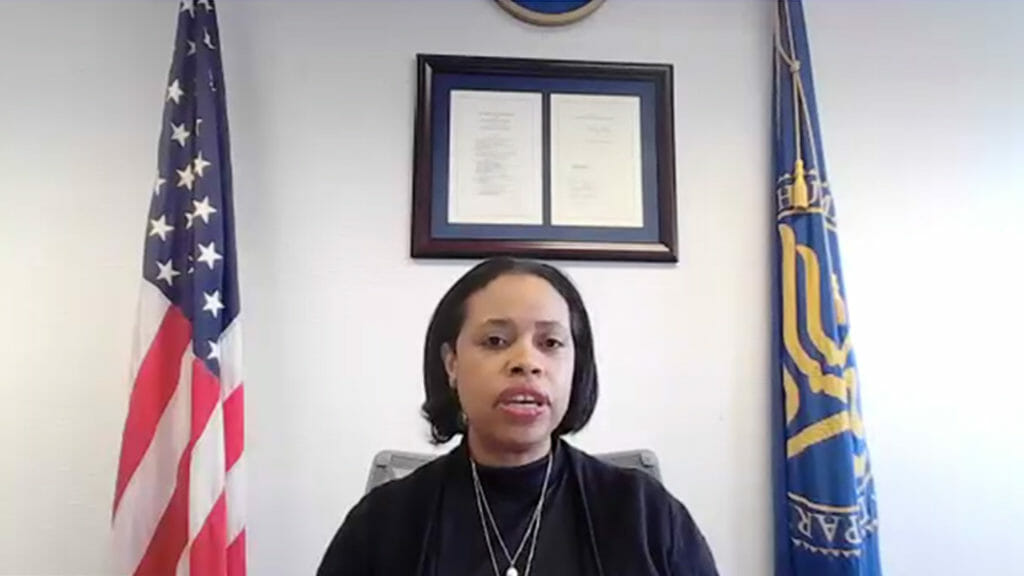
Big brother is keeping an eye on long-term care operators, and this time in a good way, federal regulators said Thursday on a call with nursing home stakeholders.
The Centers for Medicare & Medicaid Services is routinely monitoring COVID-19 vaccine reporting, and offering on-site clinics and more resources to low-performing facilities, officials said.
Administrator Chiquita Brooks-LaSure doubled down on encouraging providers to make vaccination efforts their No. 1 priority.
She emphasized the urgency to act now, noting that last January and February brought 2022’s highest spikes in COVID hospitalizations and deaths. She also pointed out that many nursing home residents and staff had not received a booster shot for which they were eligible heading into the same potentially dangerous time this year.
She cited a nursing home resident up-to-date vaccination rate of 48.7% (though a CDC official on the same call put that figure at just 47%).
“Getting the updated vaccine is the most important tool that we have to prevent serious illness, hospitalization and death from COVID-19, and nursing home residents, who are often particularly susceptible to severe outcomes from the virus deserve the highest level of protection that we can offer,” she said.
“We know that many of you have been working to increase the take-up of the new vaccines,” Brooks-LaSure added. “The rates have been steadily climbing, but this number is still too low.”
Lending a helping syringe
Anita Monteiro, director of the CMS quality improvement and clinical innovation group, said the agency’s 12 regional Quality Improvement Organizations have been monitoring the National Health (NHSN) portal weekly, and using data to identify providers that need assistance with boosting vaccination delivery.
Between Nov. 26 and Dec. 31, the QIOs organized 150 on-site regular and booster shot clinics that led to the vaccination of more than 4,000 nursing home residents and about 1,300 staff members. The teams also can provide educational materials and information on vaccines and therapeutics, and help connect facilities with local health department staff that can help administer shots when needed.
Monteiro also said that the QIOs had heard from many nursing homes regarding problems reporting vaccination data and data discrepancies. She said agency contractors had helped “several hundred” with those types of issues.
Need to go ‘above and beyond’
Other experts from CMS, the CDC and AMDA also shared tips and tools that providers can use to increase uptake of booster shots. That includes the bivalent booster shot, which officials said is expected to protect against all circulating variants.
Though data doesn’t show which shots staff members have received, far fewer are considered up-to-date than residents.
Experts urged acceptance of the bivalent booster and reminded providers it was the best way to reduce risk of hospitalization.
They also discussed treatment options and encouraged facilities to create plans for obtaining and administering therapeutics like Paxlovid. They said there are no supply shortages of approved therapeutics.
Sarah Meyer, MD, chief medical officer of CDC’s Immunization Services Division, said her agency is working to make it easier for facility staff to administer vaccinations themselves. Facilities that become sub-providers with CDC can more easily receive single-dose vaccine vials and get a 90-day exemption from some administration reporting requirements.
On the same call, Evan Shulman, director of the CMS nursing home division, said vaccinations complement operational initiatives needed to keep residents safe. He stressed the use of masks and testing per CDC guidelines as tools to ensure normalcy.
“Remember, a lot of these recommendations are just the minimum that we recommend,” he said. “But certainly the safer route is to go above and beyond the minimum.”



